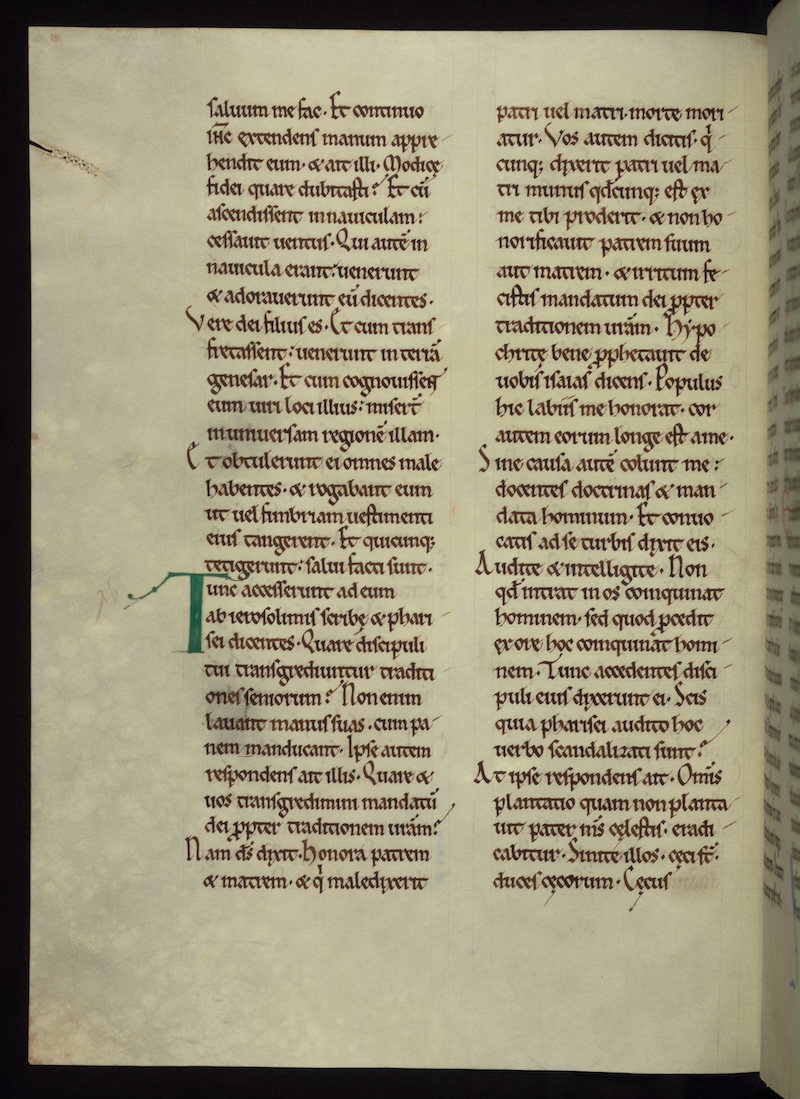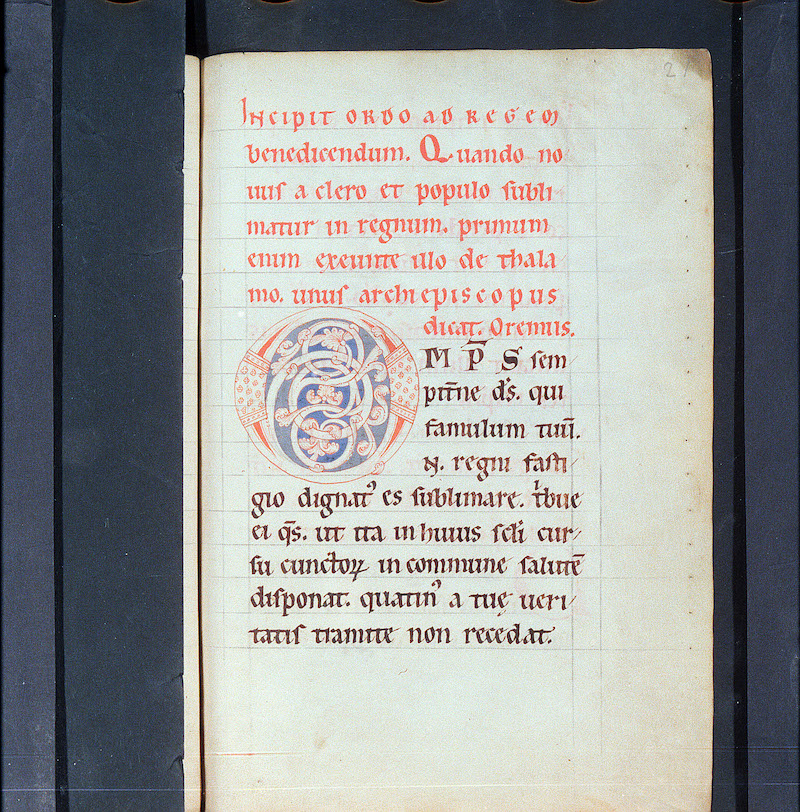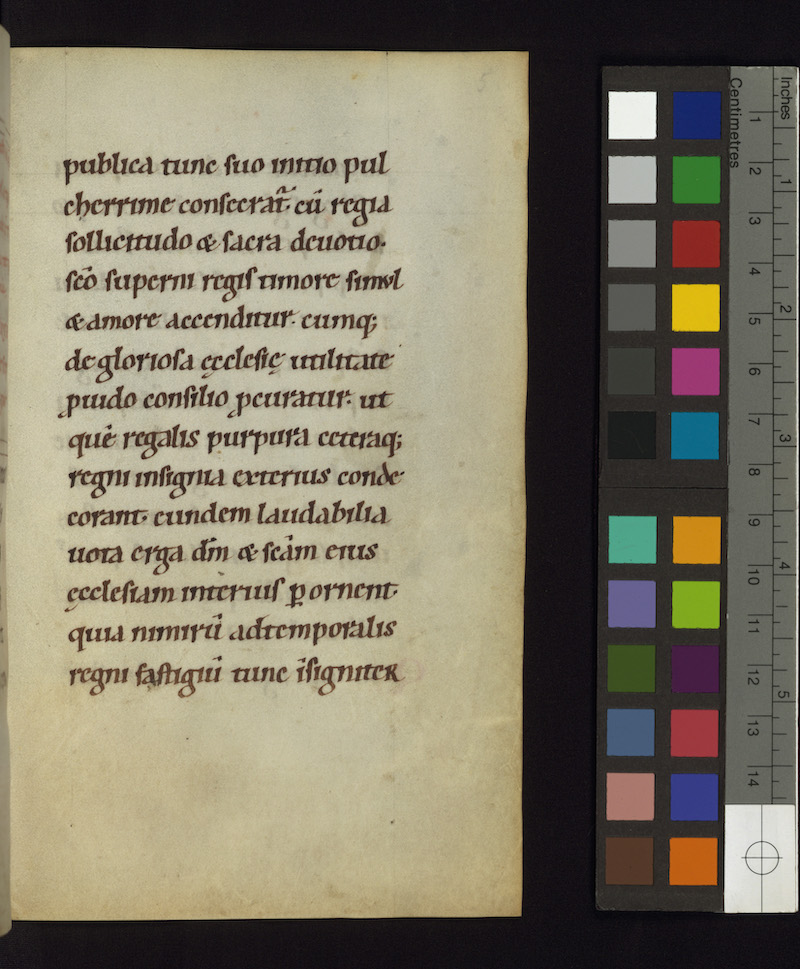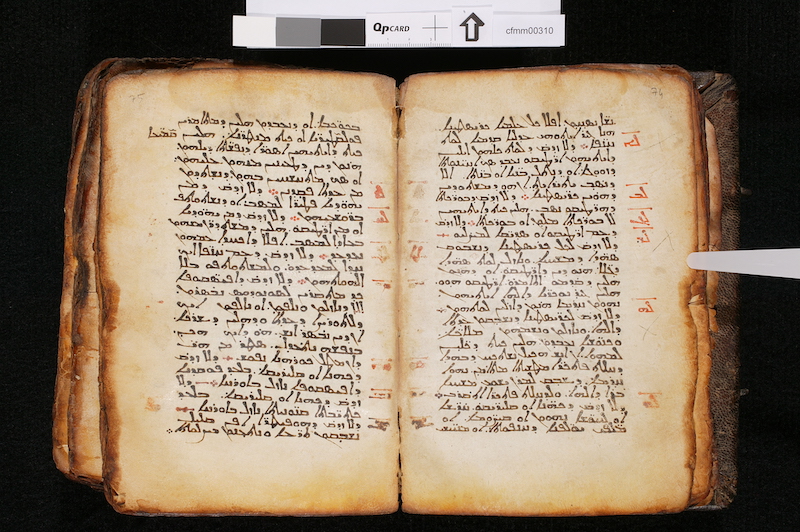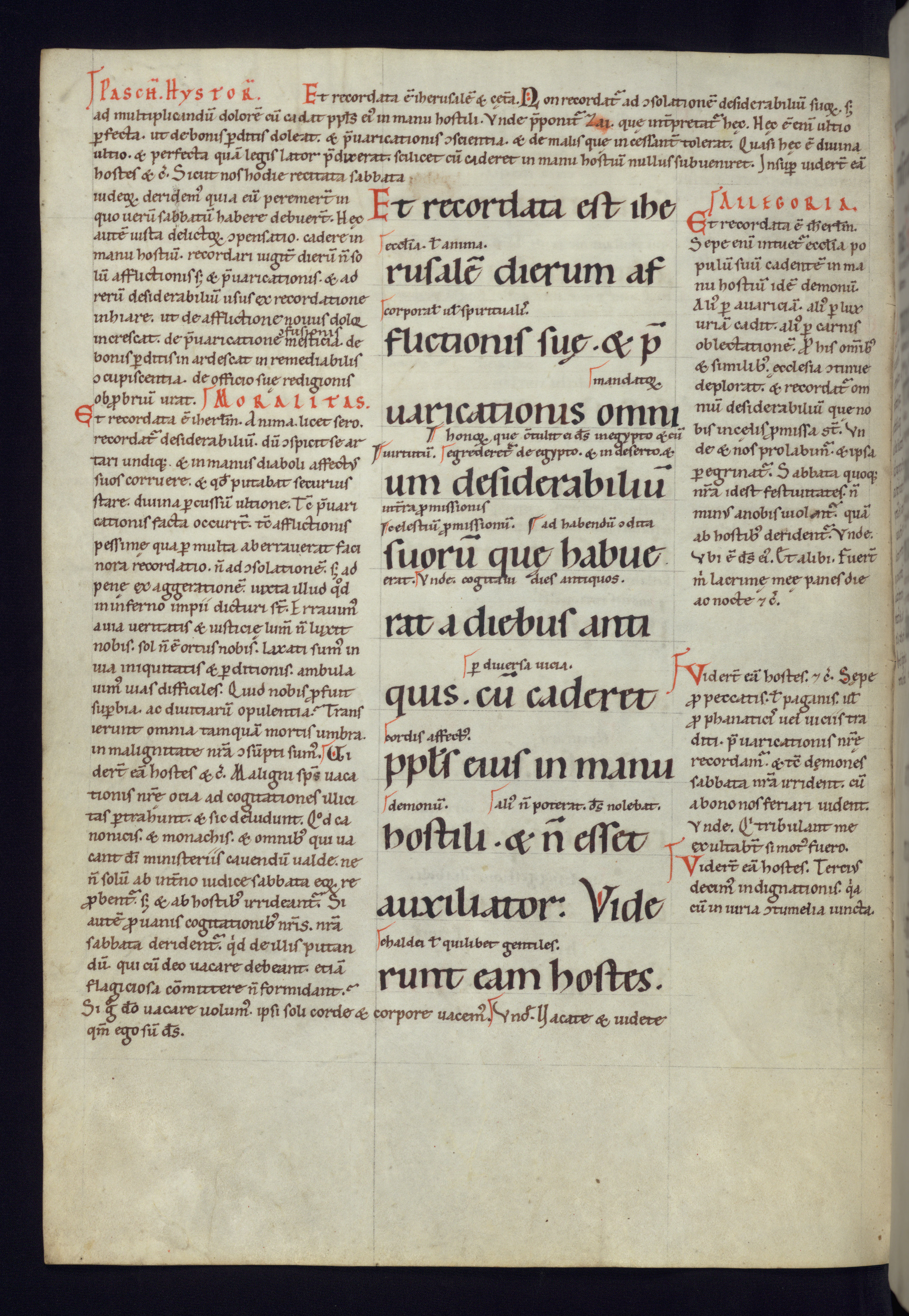
Protogothic, 12th century
-
Title
Gilbert of Auxerre, Glossa Ordinaria in Lamentationes -
Text
Lamentations 1:7 with commentary -
Language(s)
Latin -
Writing System
Roman -
Script(s)
Protogothic -
Country
United States of America -
City
Baltimore -
Repository
Walters Art Museum -
Shelf Mark
W.30, fol. 6v -
Century
12th century -
Year Range
1150-1200 -
Place Of Origin
Austria -
Provenance
In the hands of private owners in Weyer, Austria, in the 16th century. At Seitenstetten Abbey, Austria, at the turn of the 20th century. Owned by Jacques Rosenthal in 1928 and by Leo S. Olschki after 1928. Bought by Henry Walters from Olschki in 1931 -
Bibliography
Alexander Andrée, Gilbertus Universalis Glossa Ordinaria in Lamentationes Ieremie Prophete Prothemata et Liber I: A Critical Edition with an Introduction and a Translation (2005). -
External Facsimile
This manuscript is a copy of the Glossa ordinaria on the Book of Lamentations. The Glossa is a 12th-century compilation and elaboration of patristic and Carolingian commentaries on scripture and was copied in great numbers from the mid-12th century. This copy represents the first phase of scribal strategies for accommodating the complex text that is the Glossa, and, more generally, the emergence of Gothic page layouts for glossed texts for use by scholars.
The biblical text is written in larger script in the middle of the page. The components of the Glossa are arranged between and around the text. Between the lines, short glosses clarify the meaning (literal or figurative) of words in the text. For example, iherusalem (Jerusalem) is glossed ecclesia uel anima ("the Church or the soul") – possible figurative meanings in this context. Longer glosses are written in the margins. These expound at greater length the historical, moral, and allegorical senses of the text. Headings in red in Rustic Capitals mark the beginnings of the parts of the marginal gloss. The first heading on the page, at upper left, by convention refers to Paschasius, one of the Carolingian authors whose work underlies the 12th-century gloss. This pattern would be repeated on every page: a small bit of biblical text and extensive commentary.
To accommodate the text and gloss, the page is ruled in three columns. Horizontal rules are spaced for the large script of the biblical text. The smaller script of the gloss is then written at a scale of approximately 3 to 4 lines to each line of biblical text. The glosses are guided by barely-visible additonal ruled lines, whose locations can be identified by the prickings at the outside of edges of the leaf. As the copying of glossed books developed through the Gothic period, ruling patterns would become more elaborate to accommodate text and gloss with even more careful planning.
While the layout of this manuscript looks forward to codicological practices of the later middle ages, the script itself is comparatively old-fashioned. Its aspect is that of Protogothic – script in transition from Caroline Minuscule to Textualis – with a relatively large minim height, oval-shaped round letters, a rightward-lean, and consistent treatment of the feet of letters with diagonal hairstrokes pointing up and to the right. The forms of the letters, however, are generally still those of Caroline Minuscule. Signs in this hand of emergent Gothic letterforms are the 2-shaped r with crossed tail for the -rum ending, and, rarely, the 7-shaped Tironian et, which replaces the ampersand in the Gothic period.
Acknowledgements: Described by Carin Ruff
Transcription
Main text:
1 Et recordata est ihe(-)
2 rusale(m) dierum af(-)
3 flictionis suȩ. et p(rȩ)
4 uaricationis omni(-)
5 um desiderabiliu(m)
6 suorum quȩ habue(-)
7 rat a diebus anti(-)
8 quis. cu(m) caderet
9 p(o)p(u)l(u)s eius in manu
10 hostili. et n(on) esset
11 auxiliator. Vide(-)
12 runt eam hostes.
Interlinear glosses:
above line 2, glossing iherusalem: eccl(es)ia. (ue)l anima.
above line 3, glossing afflictionis: corporal(is) u(e)l spiritualis.
above line 4, glossing omnium: mandator(um)
above line 5, glossing desiderabilium: uirtutu(m) honor(um) que o(b)tulit ei d(eu)s in egypto et cu(m) egrederet(ur) de egypto. et in deserto. et
above line 6, continuing gloss above: in t(er)ra p(ro)missionis.
above line 6, glossing desiderabilium: celestiu(m) p(ro)missionu(m)
above line 6, glossing que habuerat: ad habendu(m) (con)dita
above line 7, continuing gloss above: erat. Vnde: cogitaui dies antiquos.
above line 8, glossing cum caderet: p(er) diuersa uicia.
above line 9, glossing populus: cordis affect(us).
above line 10, glossing hostili: demonu(m).
above line 10, glossing et non esset...: ali(us) n(on) poterat. d(eu)s nolebat.
above line 12, glossing hostes: chaldei (ue)l quilibet gentiles.
Marginal gloss, across top of page and down left margin:
1 PASCH(ASIVS) HYSTOR(ICE). Et recordata e(st) iherusale(m) et cȩt(er)a. Non recordat(ur) ad (con)solatione(m) desiderabiliu(m) suor(um) s(ed)
2 ad multiplicandu(m) dolore(m) cu(m) cadat p(o)p(u)l(u)s ei(us) in manu hostili. Vnde p(rȩ)ponit(ur) Zai. quȩ int(er)pretat(ur) hȩc. Hȩc e(st) eni(m) ultio
3 p(er)fecta. ut de bonis p(er)ditis doleat. et p(rȩ)uaricationis (con)scientia. et de malis que incessant(er) tolerat. Quasi hȩc e(st) diuina
4 ultio. et perfecta qua(m) legis lator p(rȩ)dixerat. scilicet cu(m) caderet in manu hostiu(m) nullus subueniret. Insup(er) uider(un)t ea(am)
5 hostes et c(etera). Sicut nos hodie recitata sabbata [******]
6 iudeor(um) deridem(us) quia eu(m) peremer(unt) in
7 quo ueru(m) sabbatu(m) habere debuer(un)t. Hȩc
8 autem iusta delictor(um) (con)pensatio. cadere in
9 manu hostiu(m). recordari iugit(er) dieru(m) n(on) so(-)
10 lu(m) afflictionis s(ed) et p(rȩ)uaricationis. et ad
11 reru(m) desiderabiliu(m) usus ex recordatione
12 inhiare. ut de afflictione nouus dolor
13 increscat. de p(rȩ)uaricatione \(con)fusionis/ mesticia de
14 bonis p(er)ditis inardescat inremediabilis
15 (con)cupiscentia. de officio suȩ redigionis
16 obp(ro)briu(m) urat. MORALITAS.
17 Et recordata e(st) iher(usa)l(e)m. Anima licet sero.
18 recordat(ur) deisderabiliu(m). du(m) (con)spicit se ar(-)
19 tari undiq(ue). et in manus diaboli affectvs
20 suos corruere. et q(uo)d putabat securius
21 stare. diuina p(er)cussu(m) ultione. T(un)c p(rȩ)uari(-)
22 cationis facta occurr(un)t. t(un)c afflictionis
23 pessimȩ qua p(er) multa aberrauerat faci(-)
24 nora recordatio. n(on) ad (con)solatione(m). s(ed) ad
25 penȩ exaggeratione(m). iuxta illud q(u)od
26 in inferno impii dicturi s(un)t. Errauim(us)
27 a uia ueritatis et iusticiȩ lum(en) n(on) luxit
28 nobis. sol n(on) e(st) ortus nobis. laxati sum(us) in
29 uia iniquitatis et p(er)ditionis. ambula(-)
30 uim(us) uias difficiles. Quid nobis p(ro)fuit
31 sup(er)bia ac diuitiaru(m) opulentia? Trans(-)
32 ierunt omnia tamqua(m) mortis umbra.
33 in malignitate n(ost)ra (con)su(m)pti sum(us). Vi(-)
34 der(un)t ea(m) hostes et c(etera). Maligni sp(iritu)s uaca(-)
35 tionis n(ost)rȩ ocia ad cogitationes illici(-)
36 tas p(er)trahunt. et sic deludunt. Q(u)od ca(-)
37 nonicis. et monachis. et omnib(us) qui ua(-)
38 cant d(e)i ministeriis cauendu(m) ualde. ne
39 n(on) solum ab int(er)no iudice sabbata eor(um) re(-)
40 p(ro)bent(ur). s(ed) et ab hostib(us) irrideant(ur). Si
41 aute(m) p(ro) uanis cogitationib(us) n(os)tris. n(os)tra
42 sabbata derident(ur). q(u)id de illis putan(-)
43 du(m) qui cu(m) deo uacare debeant. etia(m)
44 flagiciosa co(m)mittere n(on) formidant?
45 Si (er)go d(e)o uacare uolum(us). ipsi soli corde et corpore uacem(us). Vnde. Vacate et uidete
46 q(uonia)m ego su(m) d(eu)s.
Marginal gloss, right margin:
1 ALLEGORIA.
2 Et recordata e(st) iher(usa)l(e)m.
3 Sepe eni(m) intuet(ur) eccl(es)ia po(-)
4 pulu(m) suu(m) cadente(m) in ma(-)
5 nu hostiu(m) ide(m) demonu(m)
6 Ali(us) p(er) auaricia(m). ali(us) p(er) lux(-)
7 uria(m) cadit. ali(us) p(er) carnis
8 oblectatione(m). P(ro) his om(n)nib(us)
9 et similib(us). ȩcclesia (con)tinue
10 deplorat. et recordat(ur) om(-)
11 niu(m) desiderabiliu(m) quȩ no(-)
12 bis in cȩlis p(ro)missa s(un)t. Vn(-)
13 de et nos prolabim(ur). et ipsa
14 p(er)egrinat(ur). Sabbata quoq(ue)
15 n(ost)ra id est festiuitates. n(on)
16 minvs a nobis uiol[/a]nt(ur). qua(m)
17 ab hostib(us) de[s/r]ident(ur). Vnde.
18 Vbi e(st) d(eu)s ei(us). Et alibi. Fuer(un)t
19 mi(hi) lacrimȩ meȩ panes die
20 ac nocte (et) c(etera).
21 Vider(un)t ea(m) hostes. (et) c(etera). Sepe
22 p(ro) peccatis. (ue)l paganis. u(e)l
23 p(ro) phanaticis uel uiciis tra(-)
24 diti. p(rȩ)uaricationis n(os)trȩ
25 recordam(ur). et t(un)c dȩmones
26 sabbata n(ost)ra irrident. cu(m)
27 a bono nos feriari uident.
28 Vnde. Q(u)i tribulant me
29 exultab(un)t si mot(us) fuero.
30 Vider(un)t ea(m) hostes. Tercivs
31 decim(us) indignationis. q(u)ia
32 cu(m) iniuria (con)tumelia iuncta.
Paleographic Features
1. At the upper left corner of the page, the red Rustic Capitals say PASCHASIUS HYSTORICE: i.e. "Paschasius (expounds the text) historically." Partway down the left column is the red heading MORALITAS, the heading for the moral gloss on the text. In the right column, to the right of the beginning of the large biblical text, is ALLEGORIA, the heading for the allegorical exposition.
2. The gloss is highly abbreviated. Several abbreviations in the very top line on the page can serve as examples. Four words from the end of the top line, the backwards c in consolatione(m) is an abbreviation for con- (as here), and can also stand for cum.
3. Two words before that backwards c, the mark of abbreviation over recordat(ur) stands for the -ur ending. Compare that squiggly mark to the less-squiggly common mark of abbreviation used throughout this line, which normally stands for the omission of m or n after a vowel, and is also used to abbreviate e(st).
4. The second word from the end of the line is suo(rum). The 2-shaped r following o is a Gothic feature. The tail of the r sweeps down and is crossed with a mark of abbreviation, to stand for the -rum ending of the genitive plural.
5. The final word in the top line is s(ed), which is abbreviated by an s and a semicolon-like mark.
6. An important abbreviation in any glossed text is that for uel ("or"), which is used to offer two alternative explanations. This scribe has two forms of abbrevation for uel: the standard l with a stroke through it, which is the usual medieval form, and ul with a stroke through the l. The first is seen in the first marginal gloss, between the first two lines of the larger biblical text. Both forms occur eleven lines from the bottom of the rightmost column of gloss text, where the scribe writes (ue)l paganis. u(e)l.
7. In several places, the scribe puts strokes over two iis when they appear together, to distinguish them from n or u. Examples are impii in line 26 of the left marginal gloss and ministeriis in line 38 of the same column. This is a 12th-century innovation. By the 14th century, stroking individual i became normal practice. Dotting i is a 15th-century phenomenon.
